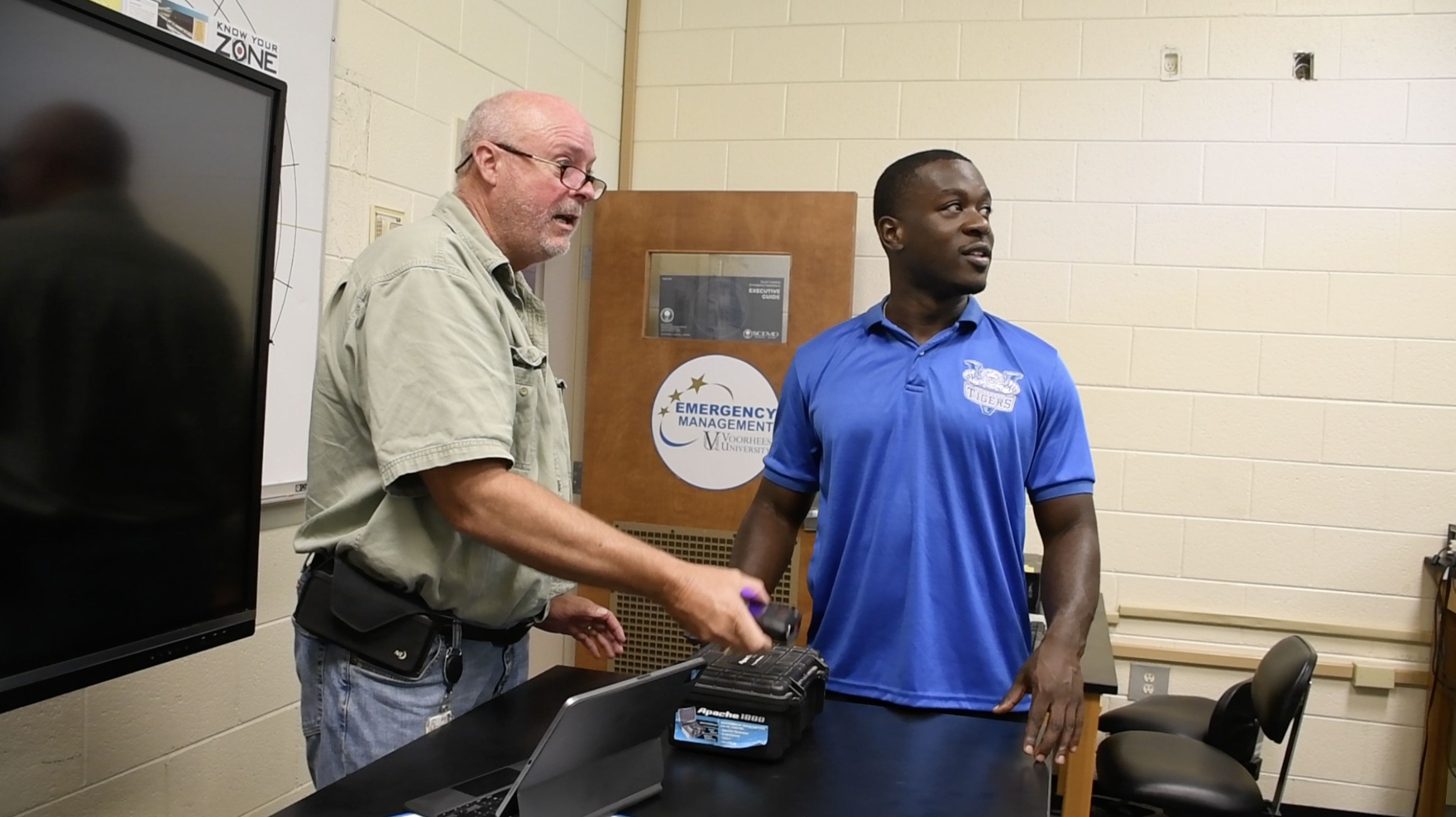Courtesy of Voorheen University
Voorhees University emergency management instructor Roger Riley says South Carolina (SC) residents already should have begun preparing for the 2022 hurricane season. He shares some hurricane preparedness tips.
The most important thing to do is to stay informed and alert for adverse weather conditions, according to Riley, who is also the emergency manager for Barnwell County and the operations coordinator for the Voorhees University Emergency Operations Center (EOC). He recommends having access to emergency alerts on mobile devices, NOAA Weather Radios, and local broadcast television and radio. These media outlets report information from the National Weather Service and the National Hurricane Center. Voorhees University also has a mass notification system to warn of inclement weather and other emergencies that may impact faculty, staff and students.
The SC Emergency Management Division has an emergency management app that can be downloaded from the Apple App Store or Google Play. Using the app, residents can build an emergency plan, keep track of the disaster supply kit, access zone evacuation maps and share a location with emergency contacts. They also can document storm damage. Residents can track weather updates virtually: online at SCETV.org/weather and on Twitter and Facebook @SCETV, @SCPublicRadio and #SCETVwx.
Riley and the Federal Emergency Management Agency (FEMA) recommend the following essential items for a disaster supply kit: one gallon of water per person per day (3-day supply for evacuation, 2-week supply for home); non-perishable and easy-to-prepare food (3-day supply for evacuation, 2-week supply for home); a flashlight; a battery-powered or hand-crank radio (NOAA Weather Radio); batteries; a first-aid kit; medications (7-day supply) and medical items; a multi-purpose tool, like a Swiss Army knife; sanitation and personal hygiene items; a cell phone with charger; family and emergency contact information; extra cash (ATMs might be inoperable); and extra fuel for a generator and car.
According to FEMA, the kit should also include copies of personal documents (medication list and pertinent medical information, proof of address, deed/lease to the home, passports, birth certificates, and insurance policies). Other items include baby supplies, pet supplies, extra car and house keys, towels, plastic sheeting, duct tape, scissors and work gloves.
“People should seek shelter away from windows and doors and not assemble in areas with large roof spans. Interior spaces and lower floors are more appropriate for sheltering during a hurricane. Avoid areas that have the potential for flooding and do not drive through standing water on roads and highways,” Riley said.
“Hurricane season, which began June 1, continues through Nov. 30. This season, we are expecting 21 named hurricanes,” he said. “Although a hurricane can happen anytime during this period, we expect the most severe weather in our area during August and September.”
Through a shared services arrangement, the Voorhees University Leonard E. Dawson Health and Human Resources Center serves as an emergency shelter for residents living in Bamberg County. Voorhees students, faculty and staff will shelter in secure buildings on campus, away from doors and windows and on lower floors as appropriate. The university’s EOC, though developed for the institution, also can be used by emergency personnel for Bamberg and Barnwell counties.

